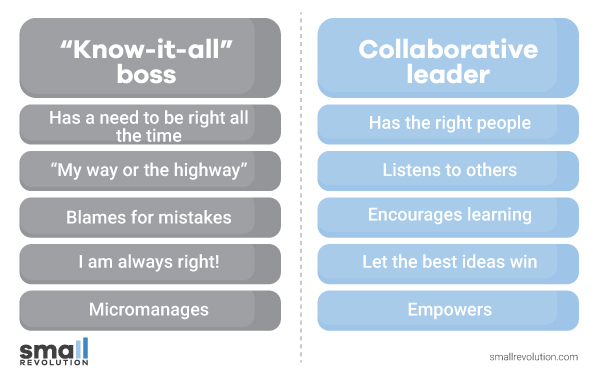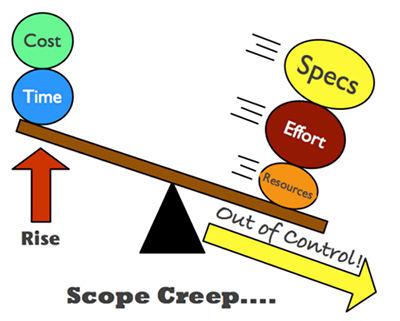Do you really think a Copywriting career is all nice and smooth? So much that you enjoy working with all your clients, they pay you well and on time, and they appreciate each and every piece of copy that you write for them?
Not quite.
You may come across clients from hell. Nightmare clients. Clients you hate.
Wait a minute, do you mean nightmare clients really exist?
Yes, they do. And we are about to show you scenarios of nightmare clients and what you can do to safeguard yourself against them.
Time to wise up. Read on.
Nightmare Client #1: Haggles Over Money
Lucky you, you’ve managed to get a client through an online job board, cold pitching or referral. Congratulations – some Copywriting work has finally come your way.
But when you present your rates, the client starts to haggle. This client thinks that you are too expensive. He even tries to downplay the value of your services to their company.
Then he proposes that you write copy for him at a reduced price in return for “great volume” of work going forward.
Take a moment and think about it:
- If you agree to more work for less pay how’s that helping you?
- If the client doesn’t value you and your services, does he really deserve to have you working for him?
- Don’t you think that once you do a project for a client at a lowered rate, the client would want to maintain that lower rate?
Here’s what you can do:
Pay close attention to a client’s reaction when you mention your Copywriting prices. If he starts to haggle, you are better off not working with him.
Nightmare Client #2: Weird and Rogue
You’ve got a client who’s given you some projects to work on. Everything is going great. You finish up the project and submit it including your invoice.
A day or two post-project delivery you hear silence. A week later – radio silence. Three weeks later – more silence.
All the while, you’ve been sparing your precious work time to send follow-up emails. And one month later, you have heard nothing from the client.
You begin to panic. You head over to Google and research the client. To your disappointment, you find that there’s little evidence online that the client exists.
Ask yourself these questions:
- Did I carry out a background check on the client to ensure that he is real and his business legitimately exists?
- Did I insist on a 50% upfront deposit to help me weed him out if he’s a casual enquirer?
- Did I think twice about the job offer?
If you are you may get your money after a struggle. In some cases, you may have to count your losses.
But never again…
Work for a first time client without a written contract and a deposit.
Always do your homework to ensure that the client is legit.
Nightmare Client #3: Mr. Know it All Client

And then there are clients who know too much. When you write copy for him, he will give you an unreasonable number of revisions – wasting your precious time.
Matching their expectations is almost impossible. You’ll even wish that they wrote the copy themselves instead of engaging you as their Copywriter.
Anyway, the customer is always right, so you have to bend backward and forwards to give the client the kind of copy they want. And then pinch yourself saying “never again.”
Consider this:
Are you ready to keep reworking on a piece of copy that you know is already great? Yet the client doesn’t show you what they want you to change?
Here’s the truth:
It’s unfortunate to land a “never satisfied client”. But it will be more unfortunate if you keep working with them after a nasty experience.
Nightmare Client #4. Dodgy Payer
It feels good when you finish up a project and the client pays you on time as agreed. It gives you the flexibility to keep creating some more awesome copy.
But there are dodgy clients who won’t pay you unless you follow up your payment (several times). So, instead of writing copy, you spend your precious time chasing pending invoices.
Food for thought:
- Can you afford to keep chasing your unpaid invoices to no avail?
- Can you afford to accept the situation as a bad experience and move on?
- Are there other ways you can use to get the client to pay you? For example, asking for your payment of their Facebook page? (Unorthodox but it could work).
Here’s what you can do:
Weigh the situation and decide if it makes sense to keep chasing the client for your payment, go the legal way, or write it off as a bad experience and move on.
Nightmare Client #5: Wants Freebies

Your time is money. And any work that you do, you should charge for it. Even if you are doing a trial article, a client should pay for it; the price could be subsidized but never free.
To get free work from you, a client may use these or similar phrases:
- “We’re a startup.”
- “It will be good exposure.”
- “There’s a lot of future work.”
- “It’ll only take a few minutes of your time.”
- “It’s going to be an excellent addition to your portfolio.”
Here’s what you should do:
When you encounter a client who wants free services, run as fast as you can. Don’t look back.
Nightmare Client #6: Scope Creep

There are clients who will keep on changing a project’s scope while you are still working on it. It happens mostly when a client comes up with new ideas and inspiration. And that’s fine.
However, what is not fine is when you still work under the previous terms. You should liaise with the client and:
- Adjust your charges to include the extra work;
- Reschedule the projects deadline to a suitable time.
In case the client isn’t ready to adjust their payments to accommodate the additional work, ask yourself “Are they worth it? If not don’t take on additional work without payment.
Tip: Always include a scope creep clause in your work contract.
How to Choose the Best Copywriting Clients?
Now you know for sure that there are nightmare clients out there. And you’ve seen how they can make your Copywriting career a pain. Luckily, we’ve shown you how to safeguard yourself.
Let’s now help you choose the best copywriting clients. We’ll list them along with their characteristics. That will make it easier for you to decide who to work for.
Let’s dive in.
Fortune 500 Companies
These are giant well-capitalized corporations. They are after writers who are easy to work with and able to provide extra services besides Copywriting. For example, knowledge of the company’s tools and software.
Here’s what you’ll like or not like about Fortune 500 Companies:
- You can expect a steady stream of assignments;
- They can easily afford to pay you top copywriting rates without haggling;
- They understand the value that your Copywriting services are bringing to their company;
- They may take a bit longer to pay you because several people have to review and approve your copy.
Small Office/Home Office (SOHO) Businesses
These clients are small businessmen and women who tend to have smaller projects in terms of scope. SOHOs aren’t the most lucrative of clients to work for. They are always looking to pay lower prices.
Here’s more about SOHOs:
- After hiring you they may be difficult to work with;
- They may need a lot of hand-holding. Most of them lack marketing knowledge;
- They may not have specialized marketing personnel therefore, they will turn to you for marketing advice and assistance;
- They are most likely to haggle your fees – they may not fully understand the value copywriting adds to their business.
P.S:
Remember to charge a separate fee for all the consultation services that you offer them. You don’t want to end up as a frustrated and unpaid marketing coach, right?
Self-Employed Professionals
These clients comprise self-employed professionals such as doctors, dentists, and attorneys. Just like the SOHOs, they are mediocre clients to write for.
Here’s why:
- A majority of them believe that their education entitles them to earn more money. If you charge them more than they do, they are less likely to hire you. How can you earn more than them yet you have no MD or JD?
- A good number of them look down on writers and have a hard time accepting them as peers. To them, writing is a “soft skill” which they think anyone can do including themselves except that they don’t have the time.
Small-Medium Businesses (SMBs)
These are companies larger than your local chiropractor and smaller than Apple, Google, or Amazon. They are also known as middle market companies and mostly have 10 employees and fewer than 500.
Here’s more about SMBs:
- You can work directly with the owner or a marketing manager;
- They have a lesser volume of writing work compared to Fortune 500 companies
- If the client likes your work and you are a good fit, you may get plenty of work at attractive rates close to those of giant corporations;
- They are more concerned with the results your copy brings. Did your copy sell a lot of their products? Did they get an ROI from your copy?
Ad Agencies and PR Firms
Ad agencies and PR firms work with corporations to market them and increase brand awareness. From time to time, these firms need copywriters to help them keep up with the high volume of work.
Keep the following points in mind when considering Ad agencies and PR firms:
- They take time to review and comment on your work;
- Know that it is easier and more profitable to work directly with a business rather than through its ad agency;
- Only work with Ad agencies and PR firms at the beginning of your Copywriting career when you are looking to gain experience, a client list, and portfolio samples;
- Be ready to work with shorter deadlines and be paid less for the same assignment that you could write at a higher fee if you wrote for the corporation directly.
Internet Businesses
With the explosion of internet marketing, internet businesses have steadily gotten popular. However, you may find it difficult to gauge internet business clients to determine how serious they are about working with you.
That notwithstanding, when you get a good client, you can help him to:
- Write a white paper;
- Write a landing page;
- Write a regular e-newsletter;
- Write a webinar presentation;
- Write an email marketing message, etc.
Bottom-Line
There are no rules cast in stone as to how to get and deal with clients. The best client is the one you like and are most comfortable working with. PERIOD.
Now head over to Small Revolution and check out all the amazing resources crafted especially for you – to help you become the best copywriter possible.

